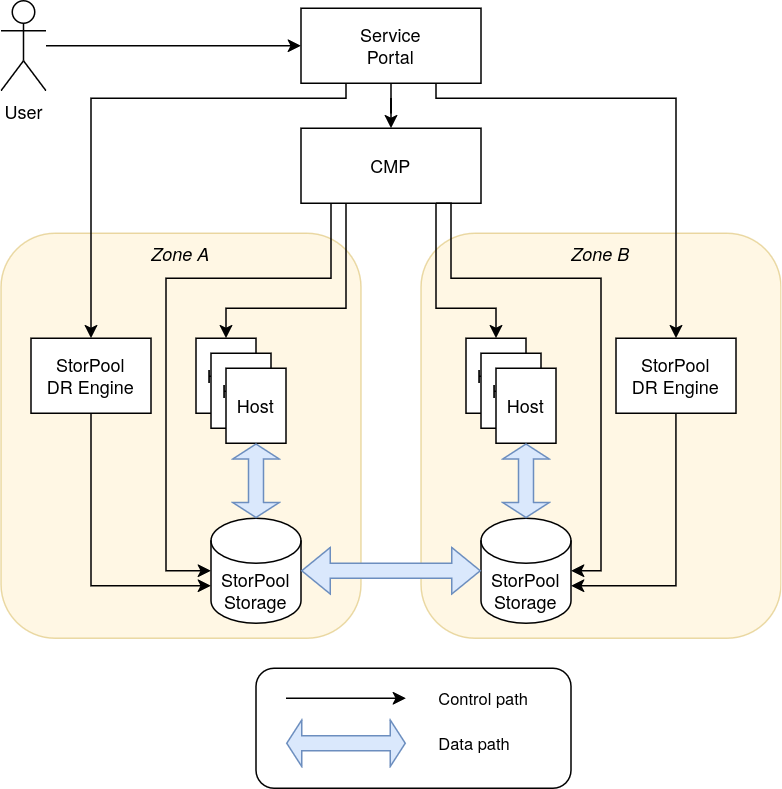DRE procedures
Integrating DRE with a cloud system allows you to perform multiple procedures, like creating a DR service, updating it, and using it when a disaster occurs.
Overview
The following diagram shows the relations between the main components of a disaster recovery setup. It illustrates the case where the CMP governs all zones:

Note that the diagram shows only the essential disaster recovery operations. The actual implementation contains more actions.
Protection models
The DR Engine supports multiple protection models:
Active-passive VMs in a primary site are protected in a recovery site, used solely for recovering workloads in a disaster scenario.
Active-active Two zones run VMs, and both zones send recovery points to the remote zone, each acting as both a primary and a recovery zone for the other.
Many-to-one Multiple primary zones run workloads that are protected in a single recovery zone used solely for recovering workloads in a disaster scenario.
Multi-site mesh Multiple zones run workloads and protect each other, acting as both primary and recovery sites.
Disaster recovery procedures
Using the REST API of the DRE allows you to perform the following procedures:
Pause DR service for a VM
Resume DR service for a VM
Modify the VM definition: add disks, remove disks, and other changes
Create on-demand recovery point: creates a recovery point outside the regular schedule
Delete on-demand recovery point.
List all DR Services
Planned VM failover / Failback / VM Migration: move the main VM to the DR zone; VM is restarted during the failover; no data loss